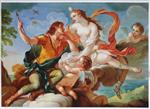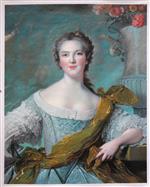
-
Various Artists
oil paintings for sale
-
The Raft of the Medusa (La zattera della Medusa) - PaintingMania.com offers affordable 100% high quality hand-painted oil paintings at wholesale prices, including all kinds of oil paintings - famous paintings reproductions, portrait, Figure, landscape, flower, animal, classical, impressionism, nude, Realistic, abstract, deco, modern and more. Custom canvas art framing available.
�������������������������������������������������������������������������������������������������
Other paintings by This Category:

Venus and Adonis by Charles Joseph Natoire

Crossing the River by Alfred Wierusz-Kowalsk

Madame Victoire of France by Jean-Marc Nattier

Equestrian portrait of August II the Strong by Louis de Silvestre